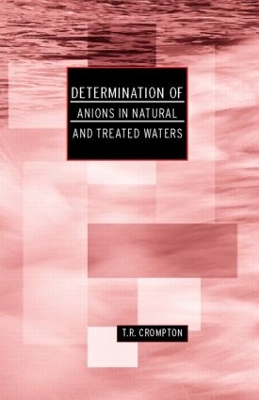Determination Techniques - The Complete Set
4 total works
Determination of Organic Compounds in Soils, Sediments and Sludges
by T R Crompton
Determination of Metals and Anions in Soils, Sediments and Sludges
by T R Crompton
As environmental controls are lagging behind industrial development, metals are an increasing hazard to humans, animal and plant life. Bioaccumulation of metals through the food chain creates a serious impact on public health yet analytical techniques for detecting the often low concentrations of contaminants are poorly understood.
Determination of Anions in Natural and Treated Waters draws together the scattered literature and presents in a systematic fashion the latest available analytical techniques for detecting anions in non-saline and saline natural and treated water. Broad outlines of different methods and their applicability in certain situations are given allowing the chemist to choose appropriate test methods.

